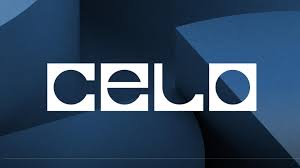Celo Unveils Dango Layer 2 Testnet, Paving the Way to Ethereum Integration

Quicktake:
- Dango Layer 2 Testnet Launched: Celo introduces its Layer 2 testnet using Optimism’s OP Stack.
- Transition Plan: Celo aims to convert its Layer 1 blockchain into an Ethereum Layer 2 network.
- Community Approval: The transition plan was approved last summer after an eight-month evaluation.
- Enhanced Performance: The new network will offer faster transactions and improved throughput.
- Mainnet Launch: The mainnet is expected to go live in early winter 2024.
Celo, the mobile-first Layer 1 blockchain known for its focus on financial inclusivity, has taken a significant step towards integrating with the Ethereum ecosystem by launching its Dango Layer 2 testnet. This launch marks the beginning of Celo’s ambitious plan to transition from a standalone Layer 1 blockchain to a Layer 2 network built on Ethereum. The move is part of Celo’s broader strategy to leverage Ethereum’s robust infrastructure and expand its reach within the decentralized finance (DeFi) space.
The Journey to Layer 2
The decision to transition to a Layer 2 network was made following a community vote last July, which saw overwhelming support for the move. Over the past eight months, the Celo community, along with its core developers, evaluated various options and ultimately decided to build the Layer 2 network using Optimism’s OP Stack. This strategic choice aligns Celo with Optimism’s “Superchain” ecosystem, which includes other notable Ethereum Layer 2 networks like Base, Zora, and Mode.
By adopting Optimism’s technology, Celo aims to benefit from the scalability and efficiency improvements that Layer 2 solutions offer. The move also positions Celo within a growing network of interconnected Layer 2 chains, enhancing interoperability and collaboration opportunities within the Ethereum ecosystem.
Technical Enhancements and User Benefits
The transition to a Layer 2 network brings several technical enhancements to Celo. One of the most significant improvements is the increase in transaction throughput by 50%, which will make transactions faster and more efficient. Additionally, the block time on the new network will decrease from 5 seconds to 2 seconds, further enhancing the user experience by reducing latency.
Celo users will continue to enjoy the convenience of using native USDT and USDC stablecoins for gas fees on the new network. Moreover, bridging tokens between Ethereum and Celo will become easier, thanks to improved interoperability features. These enhancements are designed to provide a seamless and efficient user experience, making Celo’s network more attractive to developers and users alike.
The Path Forward
The launch of the Dango Layer 2 testnet is just the first step in Celo’s transition plan. The team has outlined a roadmap that includes rigorous testing and optimization of the Layer 2 network in preparation for the mainnet launch. According to Celo’s announcement, the mainnet is expected to go live in early winter 2024.
Marek Olszewski, CTO of cLabs, a core developer of Celo, highlighted the strategic rationale behind the move: “For most EVM-compatible chains, it’s increasingly hard to justify a standalone positioning in a market where the Ethereum scaling roadmap is proving itself.” This sentiment reflects the broader industry trend towards leveraging Ethereum’s scaling solutions to enhance performance and interoperability.
Strategic Implications for Celo
Transitioning to a Layer 2 network within the Ethereum ecosystem has significant strategic implications for Celo. Firstly, it aligns Celo with one of the most robust and widely used blockchain ecosystems, enhancing its credibility and attractiveness to developers and users. By leveraging Optimism’s OP Stack, Celo can benefit from ongoing improvements and innovations within the Ethereum community, ensuring its network remains competitive and efficient.
Secondly, the move positions Celo to capitalize on the growing trend of Layer 2 solutions, which are increasingly seen as the future of blockchain scalability. By addressing the scalability challenges inherent in Layer 1 networks, Layer 2 solutions offer faster and more cost-effective transactions, making them ideal for mass adoption. Celo’s transition to a Layer 2 network aligns with this trend, positioning it for growth and adoption in the coming years.
Community and Developer Engagement
The transition plan has been shaped by extensive community engagement and feedback. The vote last summer demonstrated strong community support for the move, reflecting a shared vision for Celo’s future. This collaborative approach has been a hallmark of Celo’s development, ensuring that the network evolves in line with the needs and priorities of its users.
For developers, the transition to a Layer 2 network presents new opportunities for innovation and growth. The improved performance and scalability of the new network will enable developers to build more complex and sophisticated decentralized applications (dApps), driving further adoption and usage. By providing a robust and scalable infrastructure, Celo aims to attract a diverse range of developers and projects to its ecosystem.
Looking Ahead
As Celo prepares for the mainnet launch of its Layer 2 network, the focus will be on rigorous testing and optimization. The team is committed to ensuring the network is secure, efficient, and user-friendly, meeting the high standards expected by its community and the broader Ethereum ecosystem.
The successful launch of the Dango Layer 2 testnet is a promising start, demonstrating Celo’s commitment to innovation and growth. By aligning with Ethereum’s scaling roadmap, Celo is positioning itself for long-term success, leveraging the strengths of the Ethereum ecosystem to enhance its own network.
In conclusion, Celo’s transition to a Layer 2 network marks a significant milestone in its development journey. The launch of the Dango Layer 2 testnet is the first step towards this ambitious goal, setting the stage for a new era of scalability, efficiency, and interoperability. As the mainnet launch approaches, the crypto community will be watching closely, eager to see how Celo’s integration with the Ethereum ecosystem unfolds and what new opportunities it will bring.



